Overcome the Distance: How Technology is Revolutionising Frontline Training
Overcome the Distance: How Technology is Revolutionising Frontline Training
The Rise of Mobile, Microlearning, and Just-In-Time Learning

In today’s dynamic and fast-changing business environment, we face the amplified challenge of training a diverse and dispersed workforce.
Remote workers, deskless teams, and frontline staff are among the most impacted. They are not just any part of many modern organizations, they are vital.
However, their training presents unique difficulties.
Traditional training methods prove complex, time-consuming, and costly, especially when our employees are spread across multiple locations and geographies. As our workforce becomes increasingly mobile and interconnected, these challenges persist.
Managing consistent performance, upholding organizational standards, and fostering continuous learning becomes increasingly complex to manage.
However, this challenge has met its match.
Modern technology is changing the game in a big way. It’s revolutionizing how we train our teams, especially those on the front lines.
With mobile learning, microlearning, and just-in-time learning, we can transform these longstanding challenges into new opportunities for growth and development.
The Challenges of Training a Dispersed Workforce
Training a dispersed workforce poses a unique set of challenges.
We face the common hurdles of logistics and communication — how do we ensure effective learning when our team is spread across different time zones, physical locations, or even working patterns?
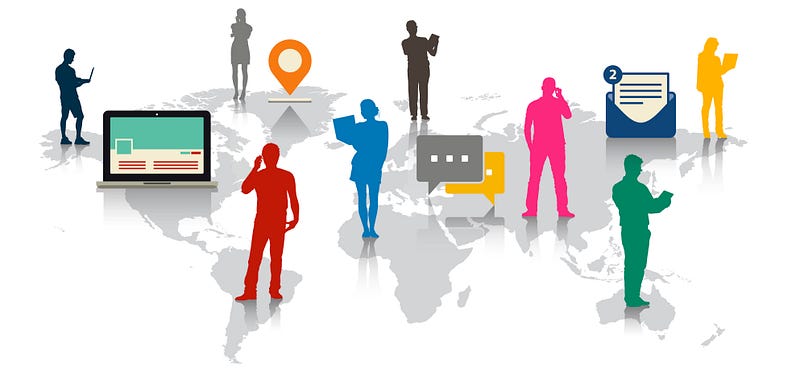
Some of the other main challenges include:
- Measurement Difficulty: Struggling to assess progress during training and reassess performance at later stages hinders the ability to track effectiveness and identity areas for improvement.
- Operational Time Loss: Training requires valuable time, which often equates to operational downtime and a loss of productivity and efficiency, a luxury many businesses can’t afford.
- Slow and Time-Consuming Processes: Traditional training methods are often slow, requiring significant time investment that could be spent on more productive tasks.
- Lack of Personalization: One-size-fits-all training lacks customization, meaning it fails to address individual learning needs and abilities, ultimately limiting the effectiveness of training
- Administrative Burden: Coordinating, planning, and bearing the cost of in-person training sessions can be challenging and often impractical.
- Geographical Dilemmas: Training a team scattered across multiple locations or time zones can make coordinating logistics and ensuring consistent training quality presents its own unique set of complications
And this is not where it ends. Even after they’ve completed the training, effectively retaining the knowledge in the future is still a major challenge.
Imagine a retail chain with employees scattered across multiple stores. They’re always on the move, constantly interacting with customers. Pulling them out for lengthy training disrupts operations and isn’t ideal for continuous learning. This scene isn’t unique to retail — it’s a universal challenge across many industries.
Furthermore, the fast-paced business world of today requires quick adaptation, whether it’s a new product launch, updated policies, or market changes. But getting these updates to every corner of your business, ensuring they’re understood, applied and remembered? That’s the real challenge.
So, how do we train a frontline workforce to not only absorb this information but also remember it for days and weeks to come?
The answer lies in the transformative trio of modern tech solutions: microlearning, mobile learning, and just-in-time learning. Each of these tools unlocks unique opportunities to revolutionize how we approach training in today’s digital age.
Enter Modern Technology: Microlearning, Mobile Learning, and Just-In-Time Learning
As we step into the world of tech-enabled learning, three powerful methods emerge as game-changers for training dispersed and frontline teams: microlearning, mobile learning, and just-in-time learning.
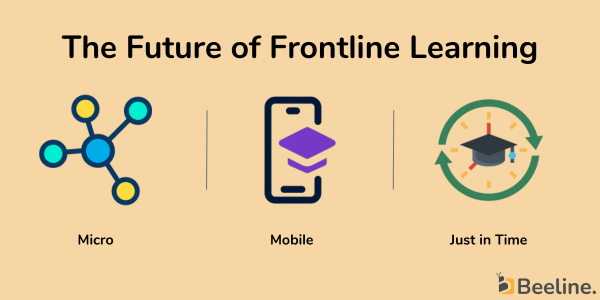
What are they though?
Let’s dive deeper into each one:
Microlearning: The Power of Bite-Sized Learning
Microlearning is all about breaking down complex information into bite-sized, easily digestible modules.
Think short videos and lessons, quizzes, or infographics that only take a few minutes to complete and are focused on single topics or learnings.
Not only is this format ideal for frontline teams with limited time for training, but it also enhances knowledge retention since our brains excel at absorbing smaller chunks of information.
Mobile Learning: Learning at Your Fingertips
Mobile learning capitalizes on our ever-present smartphones and devices, transforming them into portals for continuous learning.
Utilising mobile learning empowers employees to engage with training materials anytime, anywhere — providing much-needed flexibility for remote or deskless teams.
More so, it opens up the possibility of a tailored learning environment, adapted to the individual needs of the learner.
Mobile learning and microlearning often work hand in hand.
Just-In-Time Learning: Right Information, Right Time
Just-in-time learning is about delivering the correct information precisely when it’s needed. Rather than Just-in-Case learning, which is all about learning for the future.
Just-in-Time learning enables frontline workers to access relevant knowledge or skills at the moment of need — whether that’s handling a customer query or troubleshooting a product issue.
This immediate, point-of-need approach empowers staff to perform their roles more efficiently and effectively. It also fits perfectly with the combination of mobile and microlearning strategies.
The Power of Technology: Benefits of Modern Training Techniques
The adoption of microlearning, mobile learning, and just-in-time learning can bring transformative benefits to organizations.
By addressing the challenges of distance, engagement, and knowledge retention, these modern techniques significantly reduce the time, cost, and complexity typically associated with training a dispersed workforce.
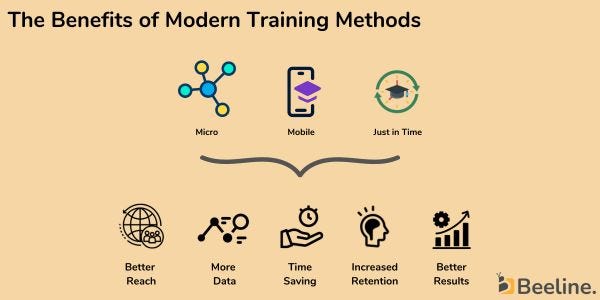
Microlearning promotes efficient learning by breaking down complex subjects into digestible pieces, reducing cognitive load and enhancing knowledge retention.
Mobile learning breaks down geographical barriers, allowing employees to learn at their own pace and in their own time. This is particularly useful for remote and deskless employees, ensuring that training opportunities are not limited by location or working hours.
Meanwhile, just-in-time learning contributes to immediate problem-solving, reducing the downtime that arises when employees are pulled out of their roles for traditional training sessions. It offers a dynamic learning approach where information is presented exactly when it’s needed, reducing the gap between learning and application.
Collectively, these techniques can revolutionize how companies train their frontline workforce, creating a more adaptable, efficient, and effective learning environment that generates better data and that caters to the unique needs of modern businesses.
And the best part?
With platforms like Beeline, it’s simpler than ever to implement them.
The Ultimate Solution: Beeline
While each of these modern training techniques — microlearning, mobile learning, and just-in-time learning — are powerful on their own, imagine their combined potential when consolidated into a single platform. That’s what Beeline delivers.
Beeline is a modern knowledge and learning management platform, purpose-built to share knowledge with and train dispersed teams.
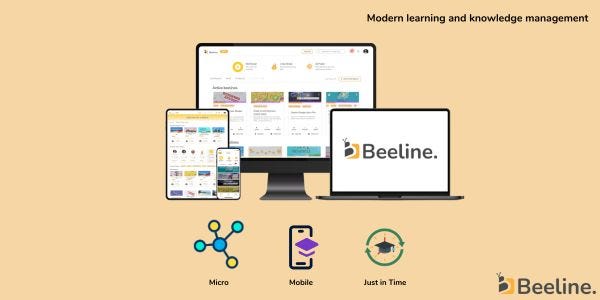
Its low-data and offline-friendly mobile apps bring knowledge to your frontline workforce’s fingertips, enabling them to learn on the go and at their own pace.
Microlearning is also embedded in Beeline’s core. The platform supports the delivery of bite-sized, focused learning units, improving knowledge retention and fitting comfortably within the tight schedules of your frontline workforce.
To further boost knowledge retention alongside its microlearning, Beeline has personalized practice algorithms built in as well. These algorithms provide adaptive learning and revision for each individual learner, ensuring everyone in your organisation has the best chance of remembering things in the long run.
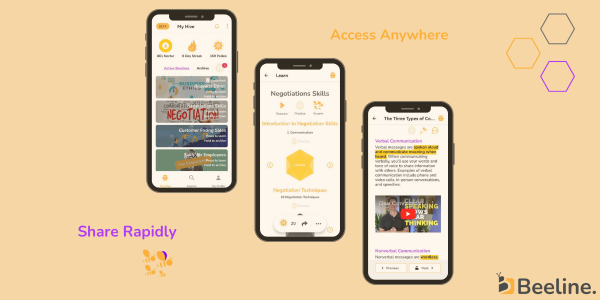
Whether you’re looking to build a knowledge hub, a training academy, or to allocate specific training to your teams in an instant, Beeline ensures your workforce has access to the relevant knowledge exactly when they need it.
One of Beeline’s most impactful features, that accompanies its microlearning, mobile learning and Just in Time learning functionality is its AI-powered content creation. This capability facilitates the rapid creation and capture of learning resources, allowing you to add new training materials to your company library swiftly.
By adapting to your teams’ specific needs, this AI-enhanced functionality ensures that content creation is not a bottleneck in your training process.
Beeline streamlines the training process by providing a single platform for all your training needs. With Beeline, you can retire the juggling act of managing multiple platforms. It’s not just a solution, but a major upgrade — a platform that transforms the process of training a dispersed workforce from a daunting task into a seamless experience.
Conclusion
Training a dispersed workforce, especially frontline teams, is a complex challenge.
But with the help of modern technology, it’s a challenge that can be not just managed, but mastered.
Microlearning, mobile learning, and just-in-time learning, each bring unique advantages to the table, creating a synergistic effect that drastically improves the training experience.
And when you have a platform like Beeline at your disposal, you have more than a solution — you have a superpower. A superpower that helps you overcome distance, time, and logistical constraints, effectively training your frontline workforce in a way that’s engaging, efficient, and enduring.
Are you ready to overcome the distance and train your frontline workforce like never before?
Get in touch with us today for more information and to see Beeline in action for yourself.
Let’s revolutionize the way we train our teams, together.
Frequently Asked Questions (FAQs):
1 — What are the main challenges faced by organisations when transitioning from traditional to technology-based training methods?
Organisations transitioning to technology-based training face challenges like ensuring digital literacy, providing technology access, and overcoming resistance to change. Tailored support and engaging content are key to a smooth transition.
2 — How do different industries tailor these technological training solutions to meet their unique requirements?
Industries customise technological training solutions by developing industry-specific content and using platforms that cater to unique needs, such as virtual training for deskless workers, personalised learning pathways, or compliance training through online academies, to ensure relevance and effectiveness.
3 — Can the effectiveness of technology-enhanced learning methods in frontline training be measured, and if so, how?
The effectiveness of technology-enhanced learning can be measured through training management systems, which track engagement, completion rates, and knowledge retention, allowing organisations to assess training impact and make necessary adjustments. It is also important to tie this back to real world performance data which can indicate whether the training interventions have been successful.